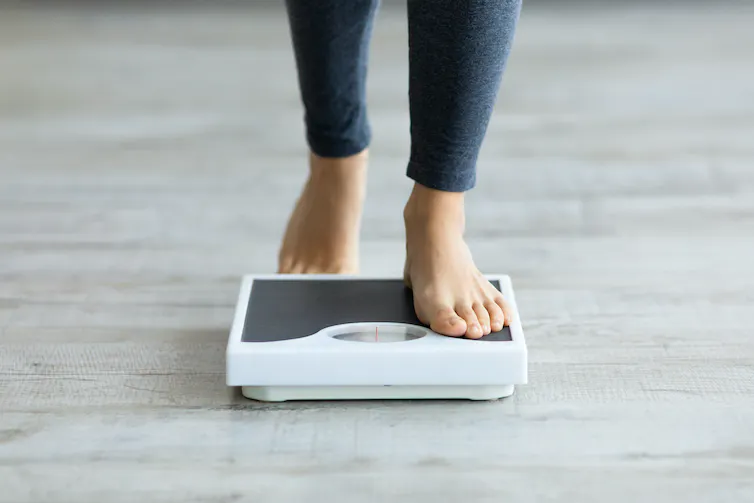
In recent times, people are now mindful of their body weight, so that as little as 1 kg doesn’t go unnoticed. This prompts both young and aged adults to seek remedies to lose excess fat or weight accumulated from their recent lifestyle.
There are undoubtedly a plethora of diets, pills, and meal replacement plans claiming to guarantee speedy weight loss, but most of them lack scientific support. There are, however, some scientifically supported weight-management measures.
These measures include exercise, calorie counting, intermittent fasting, and reducing the intake of carbs in the diet. In this piece, we will explore nine healthy weight loss methods.
7 Proven Ways to Lose Excess Fat or Weight
It is critical to remember that there are no quick remedies for weight loss. However, a nutritious, balanced diet is the greatest method to achieve and maintain a healthy weight.

This should contain 10 servings of fruits and vegetables, as well as high-quality protein and complete carbohydrates. Exercising for at least 30 minutes per day is also useful.
1. Monitoring your diet and Frequent exercise
If someone desires to shred some excess fat, they ought to practice mindful eating and be conscious of everything they eat and drink daily. The most effective approach to accomplish this is to keep note of everything they eat in a journal or an online meal tracker.
In 2017, researchers predicted that there would be 3.7 billion health app downloads by the end of the year. Diet, physical exercise, and weight loss applications were among the most popular. This is not without reason, as measuring physical activity and weight loss progress while on the go can be an excellent method of weight management.
One research discovered that consistent tracking of physical activity helped with weight loss. Meanwhile, a review of research showed a beneficial relationship between weight loss and the regularity with which food consumption and exercise were monitored. A pedometer, for example, can be an effective weight-loss aid.
2. Intermittent fasting
Intermittent fasting (IF) is a diet that alternates between fasting and eating on a regular basis. According to research, intermittent fasting can help you control your weight, lose excess fat and possibly prevent or reverse some diseases.
Several studies have found that short-term intermittent fasting for up to 24 weeks results in weight loss in overweight people.
The most common intermittent fasting methods include the following:
1. Alternate day fasting (ADF): Fast every other day and eat normally on non-fasting days.The simplified version entails eating just 25–30 percent of the body’s energy needs on fasting days.
2. The 5:2 Diet: Fast on 2 out of every 7 days. On fasting days eat 500–600 calories.
3. The 16/8 method: Fast for 16 hours and eat only during an 8-hour window. For most people, the 8-hour window would be around noon to 8 p.m. A study on this method found that eating during a restricted period resulted in the participants consuming fewer calories and losing weight.
On non-fasting days, it is recommended that you keep a balanced eating pattern and avoid overeating.
3. Eat More of Protein
Interestingly, it has been proven that protein can regulate appetite hormones to help people feel full. This is mostly due to a decrease in the hunger hormone ghrelin and a rise in the satiety hormones peptide YY, GLP-1, and cholecystokinin
A well-documented survey on young adults has also shown that the hormonal effects of eating a high-protein breakfast can last for several hours.
Great choices for a high-protein breakfast include eggs, oats, nuts and jars of butter, quinoa porridge, sardines, and chia seed pudding.

4. Consuming plenty of fibrous Meal
Do you know that dietary fiber refers to plant-based carbohydrates that, unlike sugar and starch, cannot be digested in the small intestine? Including plenty of fiber in your diet might help you feel fuller longer, which can lead to weight loss.
Rich fiber foods include:
- whole-grain breakfast cereals, whole-wheat pasta, whole-grain bread, oats, barley, and rye
- fruit and vegetables
- peas, beans, and pulses
- nuts and seeds
5. Practice Mindful Eating
Mindful eating is a technique in which individuals pay close attention to where and how they eat their meals. This method allows people to enjoy their meals while maintaining a healthy weight.
Because most people have busy lifestyles, they frequently eat on the go, in the vehicle, while working at their desks, or while watching television. Due to this, many people eat with little awareness.
Mindful eating techniques include:
- Taking a seat, preferably at a table: Take your time with the food and enjoy the experience.
- Avoiding distractions when eating: Do not watch TV, use a laptop, or talk on the phone.
- Eating slowly allows you to chew and savor your food. This strategy aids in weight loss by giving a person’s brain adequate time to notice fullness signals, which can help to prevent overeating.
- Making informed food choices: Select foods that are high in nutritional nutrients and will satisfy you for hours rather than minutes.
6 Reducing your intake of sugar and processed carbohydrates
Our modern diet is becoming increasingly heavy in added sugars, which have been linked to obesity, even when the sugar is consumed in beverages rather than food.
Processed carbohydrates are highly refined foods that lack fiber and other nutrients. White rice, bread, and pasta are examples. These meals digest quickly and quickly convert to glucose.
It is important to know that excess glucose enters the blood and provokes the hormone insulin, which promotes fat storage in the adipose tissue. This contributes to weight gain.
People should replace processed and sugary foods with more nutritious ones whenever possible. Food swaps that work well include:
- whole-grain rice, bread, and pasta instead of the white versions
- fruit, nuts, and seeds instead of high-sugar snacks
- herb teas and fruit-infused water instead of high-sugar sodas
- smoothies with water or milk instead of fruit juice
7. Having a good night’s sleep
Numerous research has found that sleeping for less than 5-6 hours per night is related to an increased risk of obesity. This is due to a number of factors.
According to research, insufficient or poor-quality sleep lowers metabolism, the process by which the body transforms calories into energy. When metabolism is impaired, the body may retain excess energy as fat. Furthermore, lack of sleep can boost the synthesis of insulin and cortisol, both of which promote fat storage.
Sleep duration influences the regulation of the appetite-controlling hormones leptin and ghrelin. Leptin sends fullness signals to the brain.






